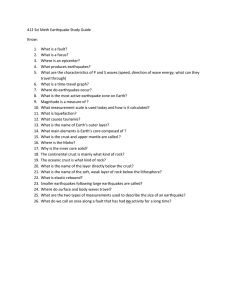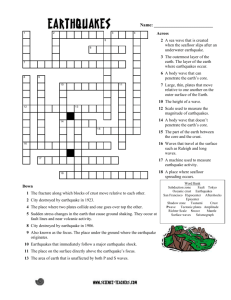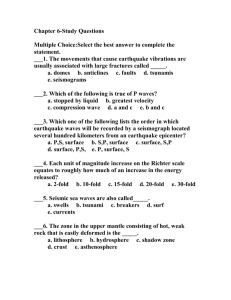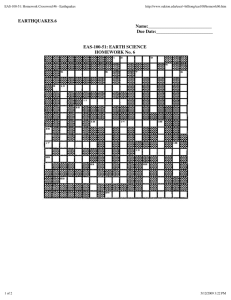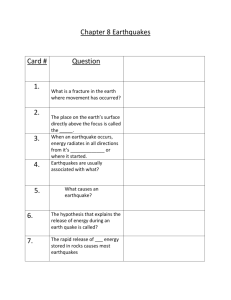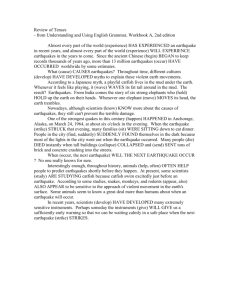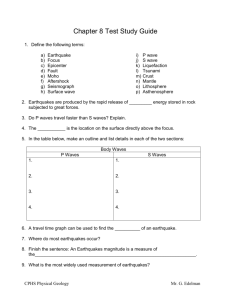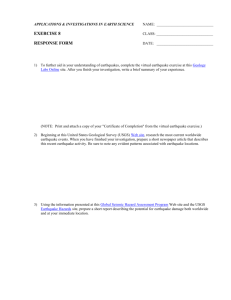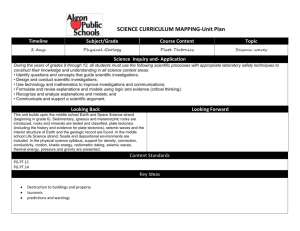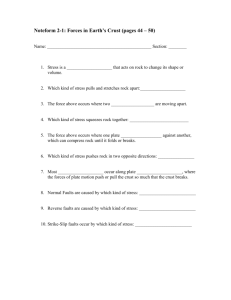9. Earthquakes
advertisement
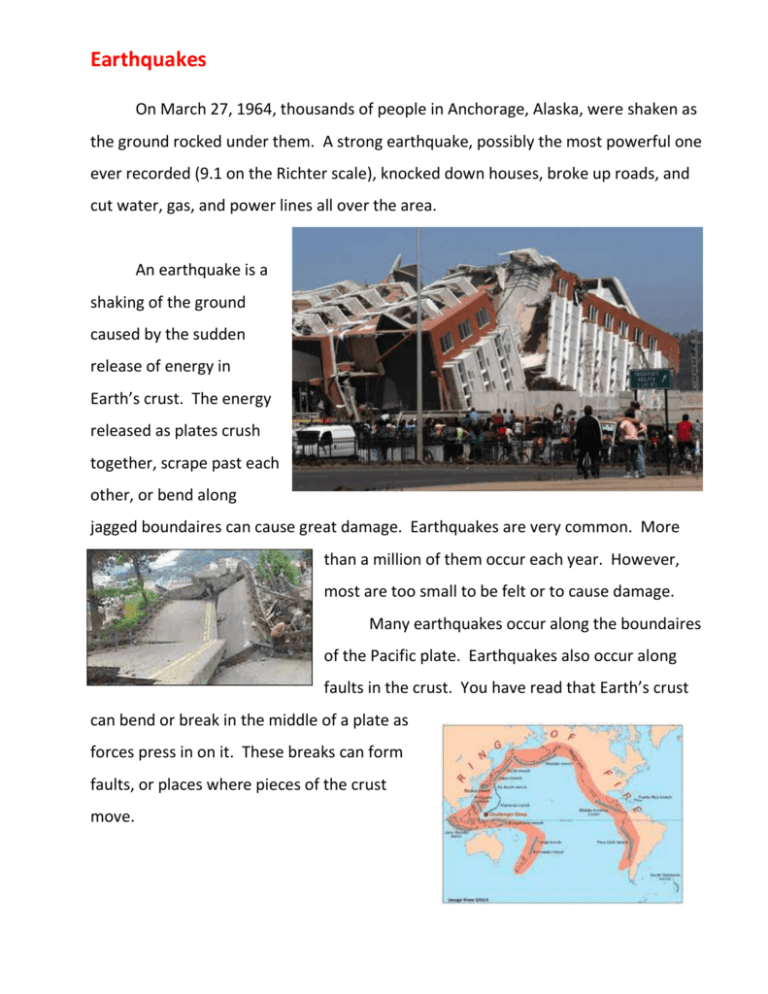
Earthquakes On March 27, 1964, thousands of people in Anchorage, Alaska, were shaken as the ground rocked under them. A strong earthquake, possibly the most powerful one ever recorded (9.1 on the Richter scale), knocked down houses, broke up roads, and cut water, gas, and power lines all over the area. An earthquake is a shaking of the ground caused by the sudden release of energy in Earth’s crust. The energy released as plates crush together, scrape past each other, or bend along jagged boundaires can cause great damage. Earthquakes are very common. More than a million of them occur each year. However, most are too small to be felt or to cause damage. Many earthquakes occur along the boundaires of the Pacific plate. Earthquakes also occur along faults in the crust. You have read that Earth’s crust can bend or break in the middle of a plate as forces press in on it. These breaks can form faults, or places where pieces of the crust move. The underwater earthquake that triggered the December 2004, Sumatra Tsunami was the longest earthquake ever recorded, scientists have announced. Most earthquakes last a few seconds or perhaps a minute. The Sumatra quake lasted between 500 and 600 seconds. In addition, scientists say, the earthquake created the longest fault ever seen, a rupture in the sea floor nearly 800 miles long. Land was ripped apart as far as 50 feet. The massive quake also released an unheard-of amount of energy, the amount that would be found in a 100-gigaton bomb. In effect, scientists say, "the whole planet shook." Sophisticated instruments recorded movement everywhere around the world. An earthquake sends out energy in the form of seismic waves. Seismic waves are like ripples that form on a pond when a stone is tossed in. Scientists measure and record seismic waves on an instrument called a seismograph. These measurements can then be used to compare the relative strengths of earthquakes. √What is an earthquake?



